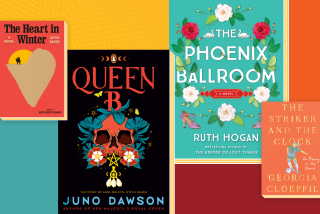Waltzing Across Literary Australia : THE FABER BOOK OF CONTEMPORARY AUSTRALIAN SHORT STORIES <i> edited by Murray Bail (Faber & Faber: $25, cloth; $9, paper; 413 pp.) </i>
Australians are celebrating two centuries of European settlement on that far-flung continent. And many of them are talking about how the nation has come of age, freed at last from colonial thinking, blessed now with unlimited prospects. Murray Bail, one of Australia’s most original writers, has set out to prove the same for the country’s fiction, through a collection of 32 modern short stories representing two dozen writers.
Bail repeats in a brief but pungent introduction what Australia’s only Nobel Laureate, Patrick White, said in 1958 about the national literature. White called it the “dreary dun-coloured offspring of journalistic realism,” and decided to change its course, which he did. Agreeing with White’s estimation, Bail considers fiction before 1950 generally inferior. Unlike that since, he notes, it celebrated the bush myth through tales of endurance and tragedy, ludicrous incidents, hard luck, survival in a harsh and empty land, and “drew energy from the reader instead of feeding with energy.”
Although Bail admits that pockets of “dun-coloured realism” still exist, he makes no room for traditional bush yarns. Instead, most stories in the collection use urban settings, justifiably so considering that more than 70% of Australia’s population lives in cities. Several take place overseas, again appropriate, for Australians are inveterate travelers, often self-imposed exiles.
All of Bail’s choices stress character over events, the country of the mind over the physical landscape, experimentation with form over realistic conventions. These qualities distinguish the opening story, Marjorie Barnard’s “The Persimmon Tree,” published in 1943 on the eve of what Bail considers the contemporary period. The writers’ birth dates determine the order of the stories, which is a subtle but workable pattern. For instance, when the writing of Frank Moorhouse appears half way through the book, it marks a dramatic transition in form and subject. The changes, though, are not always for the better.
The first part of the book includes stories by several Australian writers known abroad--Christina Stead, Patrick White, Elizabeth Jolley, Shirley Hazzard, and David Malouf. Unfortunately, absent is work by Thomas Keneally, Thea Astley (see Endpapers, Page 11), C. J. Koch, Jessica Anderson, and Bail, who modestly omitted his own inventive fiction. The others represented in this section are established in Australia, but not internationally. One of these, Olga Masters, will be published for the first time in the United States this year, and her shrewd accounts of human frailty should gain wide recognition.
A character in Malouf’s “The Sun in Winter,” one of the best pieces in the collection, unintentionally defines the essence of the short story: “But to see what is common, that is the difficult thing, don’t you think? For that, we need imagination, and there is never enough of it--never, never enough.” When a story reveals that which is uncommon in “what is common,” then it succeeds, whether it be the combined account of a funeral and scavenging in White’s “Down at the Dump,” the short history of a sexual fantasy in Stead’s “A Harmless Affair,” the satiric rendering of bureaucracy in Hazzard’s “The Meeting.”
From Moorhouse’s two stories onward there is “never, never enough”--except for Peter Carey’s “American Dreams,” a Borges-like handling of the impact of American culture on Australia. Otherwise, these works introduce a single aspect of what Moorhouse once called the “state of the art” in Australian fiction. Missing are selections from migrant writers recording their encounter with Australian life, and ones by Aborigines examining their dispossession--both strong currents in Australian writing today. Instead, non-narratives about urban intellectuals dominate. Even though these fictional folk booze endlessly, the accounts of their bleak lives too often resemble the formulaic bush yarns that Bail describes in his introduction as “dry.” Another kind of literary regionalism appears to be developing in which the urban feminist has stepped into the hardy pioneer woman’s place, the sophisticated male sybarite into the bushman’s role.
The reader of such a collection can always browse a bit, start a story, drop it, move on, then find a gem--and there are plenty of those to uncover. After all, no one ever agrees totally with an editor’s judgment. Although it is understandable that Bail wanted the stories to speak for themselves without editorial comment, bio-bibliographical notes placed at the end of the book would be especially helpful for overseas readers.
Though no collection could fully open up the pervasive excitement of contemporary Australian fiction, this volume--even with its omissions and slanted view of recent writing--is a welcome addition to the growing amount of Australian literature available in the United States.
More to Read
Sign up for our Book Club newsletter
Get the latest news, events and more from the Los Angeles Times Book Club, and help us get L.A. reading and talking.
You may occasionally receive promotional content from the Los Angeles Times.







